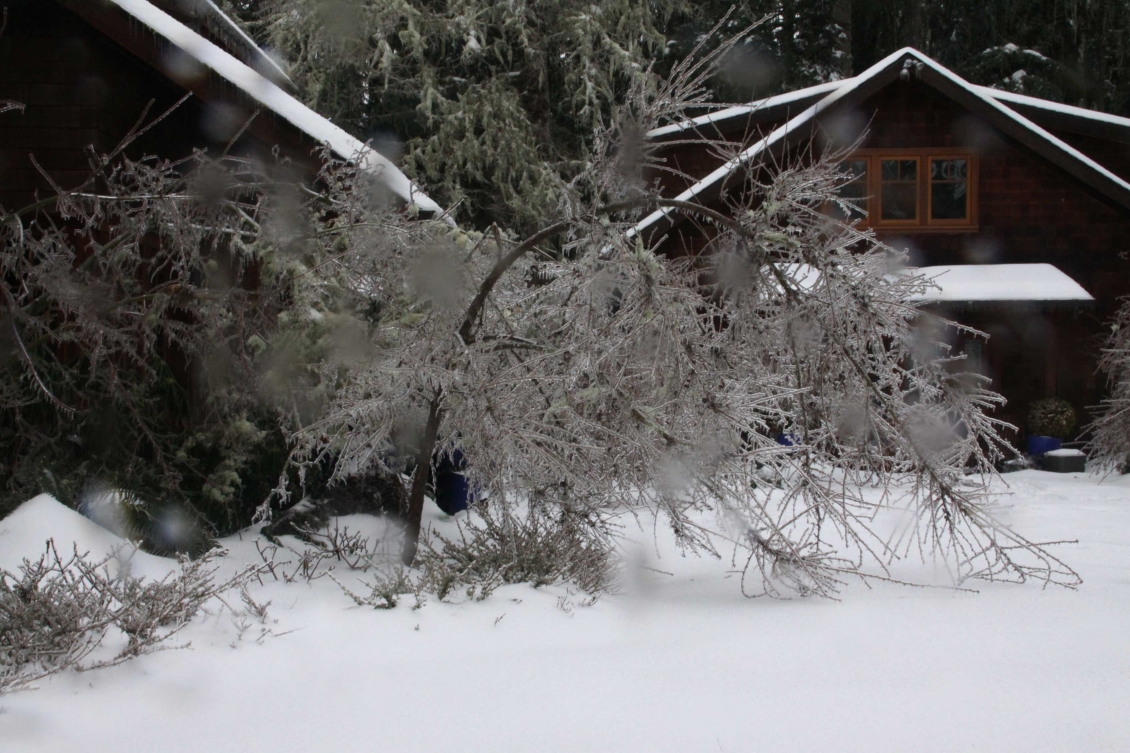
Way back in February, there was a record ice storm. Trees bent to the ground, shrubs flattened, buds coated in ice looking like candy confections.... Hopefully you were smart enough not to get rough with your plants trying to help them clear the ice, and you didn't panic to try and help them upright right after. But now it is spring. All those bent over trees are reaching again for the sky, and the flattened shrubs are back up and shooting out new growth, but the hidden damage is finally showing. Is it best to try and nurse your favorite plants back to health or give up and start over?
Here in the southern Willamette Valley in Oregon, we had a rare winter of extremes. Our maritime climate was turned twice on its head with record breaking low temperatures. The first was really early in the winter before our trees and shrubs had relaxed into dormancy. The second included temperatures in the single digits in February, far below our normal coldest winters, and topped off with a half inch coating of freezing rain that held for 3 days. We are in a very temperate zone 8 here, and are accustomed to enjoying plants that hail from near the arctic, all the way to the Mediterranean. It has been fascinating to see what failed, and what has come back. Most deciduous shrubs and trees know how to prepare for the cold. They pull their saps back within their thick bark, shed their tender leaves and go to sleep. Our tall conifers drop their branches to their sides and let the snow and ice slide to the forest floor. Most of the perennials sacrifice everything above ground routinely each winter, counting on the soil to protect the life force in the roots. It seems the most vulnerable plants have been the broad-leaf evergreens who normally thrive in our wet 40-degree winter days, preparing flower buds for early spring blooms. These guys really suffered. The Sweet Box (Sarcoccoca confuse), the Star Jasmine (Traechelospermum jasminoides), and even the David’s Viburnum (Viburnum davidii) – all reliable long lived plants here - died slowly from the tips toward the trunks, and the cause was long vertical splits in the bark caused by freeze. Branches turned black and hard. Poor things, they lost the continuity of the vessels that carry nutrients and were left open to disease.
So obviously, those branches aren’t going to recover. Step one. Prune them back to a healthy branch or leaf node and see if they bud out in the spring. Step two, spring has arrived and either you are amazed at how your poor shrub is sprouting from the base of the still healthy branches, or it has obviously just not made it. But what to do if it is a third alternative and it’s trying hard, but still looks pretty crummy with the graduation party quickly approaching? Before you rip it out, check in with the nurseries. They had the same bad winter! Is a replacement even available that will make you happy? Remember however the advice that I received one year from a trusted landscaper. A temporary blank spot in the garden is far more attractive than a near dead specimen. Sometimes you have to let go of an old attachment to make room for a new adventure!